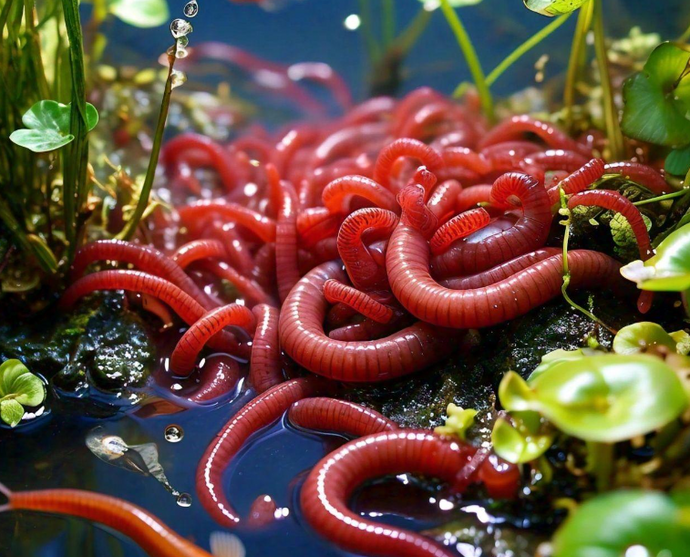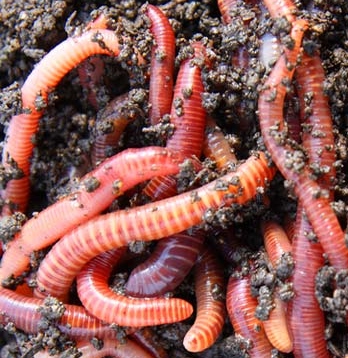Red wigglers: For sustainable composting
Wiki Article
Transform Your Garden With Red Wigglers: Advice
By developing a basic worm container and understanding the nutritional needs of these exceptional animals, garden enthusiasts can substantially boost soil quality and plant wellness. The process of converting natural waste into abundant, fertile spreadings is both simple and gratifying.
Benefits of Red Wigglers
Red wigglers, clinically recognized as Eisenia fetida, are usually hailed as nature's composting champions. These exceptional worms offer numerous crucial advantages that can substantially boost garden health and performance.
An additional noteworthy benefit of red wigglers is their capability to lower waste. By composting natural products that would certainly or else add to garbage dump waste, they play a crucial role in sustainable gardening practices. Last but not least, incorporating these worms right into your horticulture regimen can lead to raised yields, much healthier plants, and an extra lively garden setting, making them very useful allies for gardeners looking for to improve their ecological impact.
Establishing Up a Worm Container
Creating a worm bin is an essential step for any individual seeking to harness the benefits of red wigglers in their horticulture efforts. An appropriate worm container can be made from different materials, including plastic containers, wood dog crates, or readily available worm bins. The very first consideration is dimension; a bin that goes to least 2 feet large, 3 feet long, and 1 foot deep is normally optimal for a small to tool number of worms.Following, guarantee proper drainage and ventilation. Drill openings in all-time low for excess moisture to leave and in the sides for air movement. It's crucial to create a bedding layer, utilizing products such as shredded newspaper, cardboard, or coconut coir to give a comfy setting for the worms. The bed linens must be moist however not soggy, resembling a damp sponge.
Area the bin in a location that preserves a constant temperature, ideally between 55 ° F and 77 ° F. Avoid straight sunlight or extreme chilly, as these problems can hurt the worms. Once the bin is established, enable the bedding to go for a few days before introducing the red wigglers, guaranteeing they have a flourishing atmosphere in which to grow.
Feeding Your Red Wigglers
As soon as the worm bin is established and the red wigglers are introduced, proper feeding comes to be key to keeping a healthy and balanced worm population. Red wigglers grow on a diverse diet plan, primarily containing kitchen scraps and organic products. Ideal foods consist of vegetable peels, fruit scraps, coffee premises, and crushed eggshells. It is critical to avoid feeding them meat, dairy products, or oily foods, as these can produce undesirable odors and draw in insects.When presenting food, chop the scraps into smaller items to help with quicker intake. Furthermore, hide the food beneath a layer of bed linens product to avoid fruit flies and other hassles. Display the feeding frequency; a basic regulation is to offer food every 1-2 weeks, depending on the number of worms and the amount of food waste generated.

Gathering Worm Spreadings
Just how can you inform when it's time to collect worm castings from your container? The readiness of worm spreadings is indicated by a few key signs.One more sign is the reduction in worm activity; as the castings build up, worms have a tendency to migrate in the direction of fresher food resources. If you notice a decline in worm movement and the visibility of spreadings at the base of the bin, it's a clear signal that harvesting schedules.
To collect, carefully dig the castings, making sure to decrease disturbance to the worms. A prominent technique includes dividing the spreadings utilizing light; worms tend to tunnel far from the light, enabling you to gather the spreadings more quickly.
Collecting routinely, around every three to six months, guarantees a regular supply of this nutrient-rich change for your gardening ventures. Bear in mind, the quality of your spreadings straight influences the health and wellness of your plants.
Utilizing Spreadings in Your Garden
(red worms)Making use of worm castings in your garden can dramatically improve dirt health and wellness and plant development - red worms. These nutrient-rich natural plant foods offer vital macro and trace elements, enhancing the general fertility of your soil. By incorporating worm spreadings into your yard beds, you can promote valuable microbial task, which aids in vitamins and mineral schedule and boosts soil frameworkTo make use of worm spreadings properly, blend them into the leading couple of inches of dirt before growing. You can develop a nutrient-dense liquid plant food by steeping worm spreadings in water for a week, after that using the resulting "worm tea" straight to your plants.
Worm castings also improve dampness retention within the soil, decreasing the demand for regular watering. On a regular basis incorporating worm spreadings right into your gardening routine can lead to durable plant development, boosted yields, and a general healthier garden environment.
Verdict
By developing a worm container, offering ideal food, and routinely harvesting nutrient-rich spreadings, garden enthusiasts can foster a sustainable ecosystem. The usage of worm spreadings and "worm tea" further adds to moisture retention and nutrient accessibility in the dirt.Report this wiki page